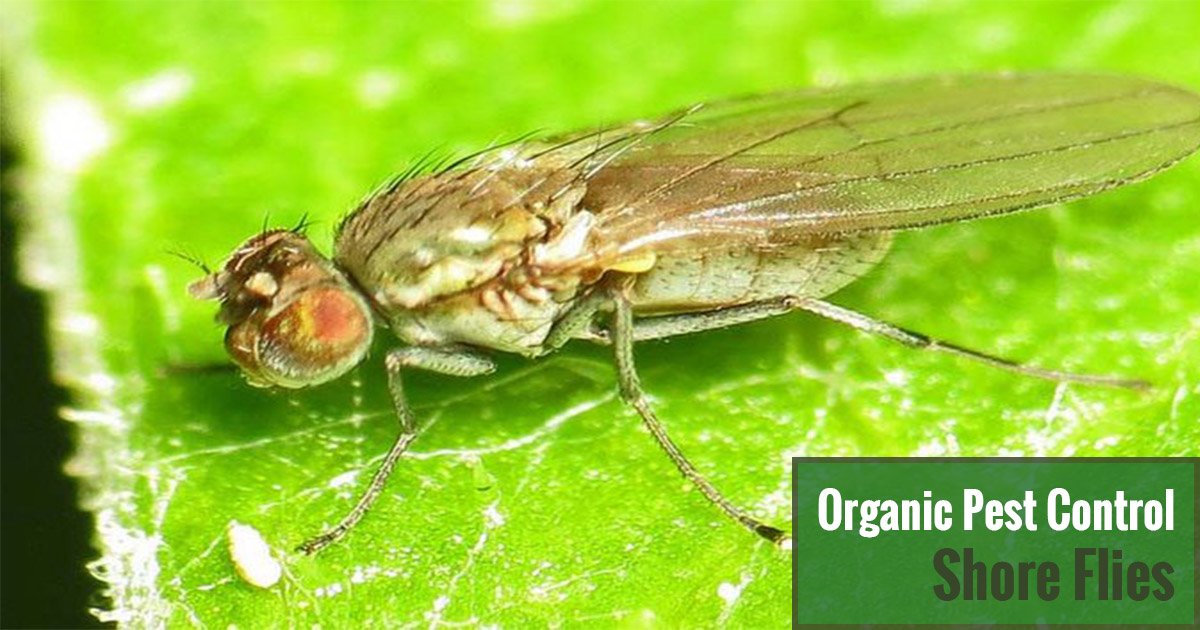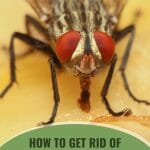
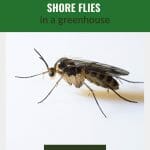
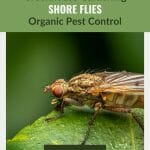
If you’ve found small flying insects on and around your greenhouse plants, you might be dealing with an infestation of shore flies. Easily confused with fungus gnats, shore flies are flying insects that don’t directly feed on plants, but can cause serious damage in your greenhouse nonetheless by spreading disease.
If you have shore flies in a greenhouse, it’s important to take steps to both prevent and eliminate the pest. The first step to dealing with shore flies is learning about their life cycle and typical activity. Then, you can take steps to not only get rid of shore flies in your greenhouse, but also prevent them from coming back.
In this article, we take a closer look at shore flies and why they’re bad news for your greenhouse plants. More importantly, we’ll go over how you can take steps to get rid of shore flies organically and ensure that they don’t come back!
What are shore flies?
Shore flies (Scatella stagnalis) are small flying insects that feed primarily on algae found in organic matter, standing water, and other moist surfaces. Due to the nature of greenhouses, it’s common to find algae growing wherever there is ample supply of light, water, and nutrients, such as on moist potting soil. If your greenhouse has algal growth, it’s likely that there are shore flies, too – and vice versa.
Shore flies are often mistaken for fruit flies or fungus gnats, which are also tiny flying pests that prefer the greenhouse environment. But unlike both fruit flies and fungus gnats, shore flies don’t actually feed on the plants themselves. Instead, they feed on algae.
What do shore flies look like?
Shore flies are housefly-shaped and small, about ⅛ of an inch long. Their wings are dark and overlapping, with three white spots on each wing. Shore flies have short legs and antennae, but these are hard to see without a magnifying glass.
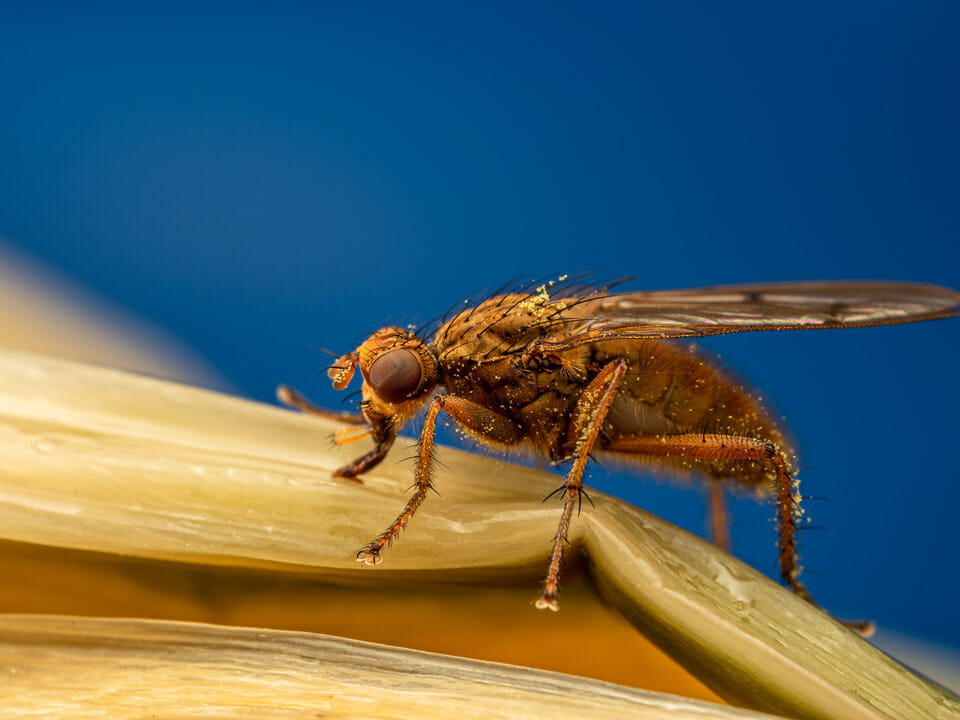
Shore flies lay small oblong eggs that hatch into larvae. Shore fly larvae are opaque white or yellow with no distinct head.
The life cycle of shore flies
Female shore flies lay their eggs on algae or moist growing media. In just two or three days, those eggs hatch. The larvae feed on algae for approximately one week until they enter their pupal stage.
After five days in the pupal stage, adult shore flies emerge and continue their life cycle. Adults can live for 3-4 weeks, and females can lay up to 500 eggs during that time! As you can see, a population of shore flies can quickly get out of hand…
Shore flies vs. fungus gnats and fruit flies
Often confused for one another, shore flies and fungus gnats are different both in appearance and in behavior.
Up close, shore flies resemble common fruit flies more so than fungus gnats do. They have shorter legs, bristle-y antennae, and reddish eyes. Because shore flies don’t consume plant tissue directly, they can be difficult to control with traditional methods.
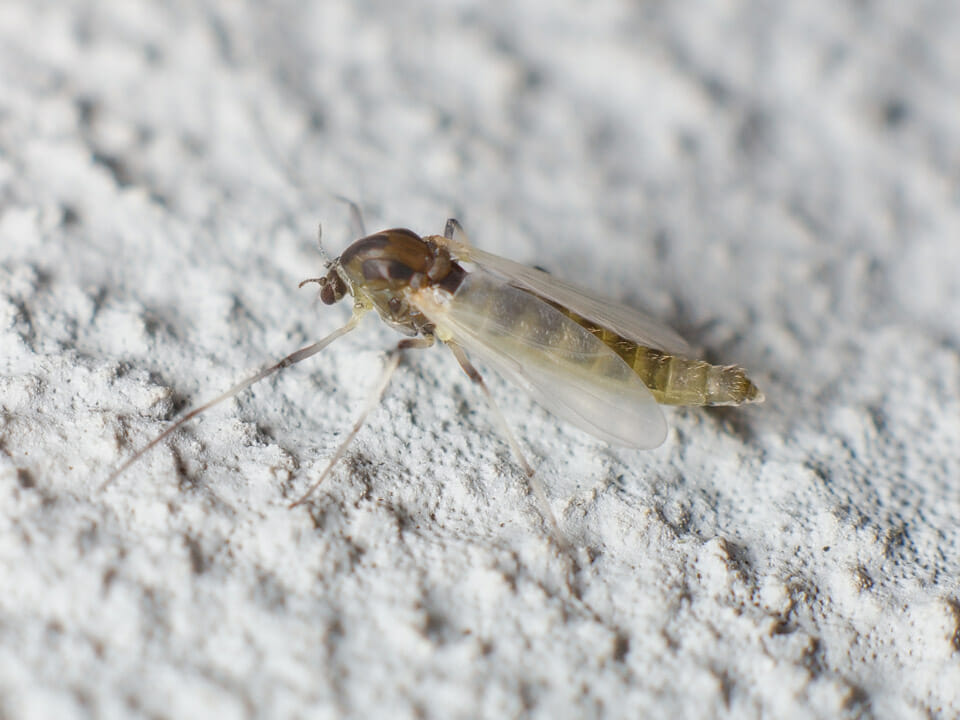
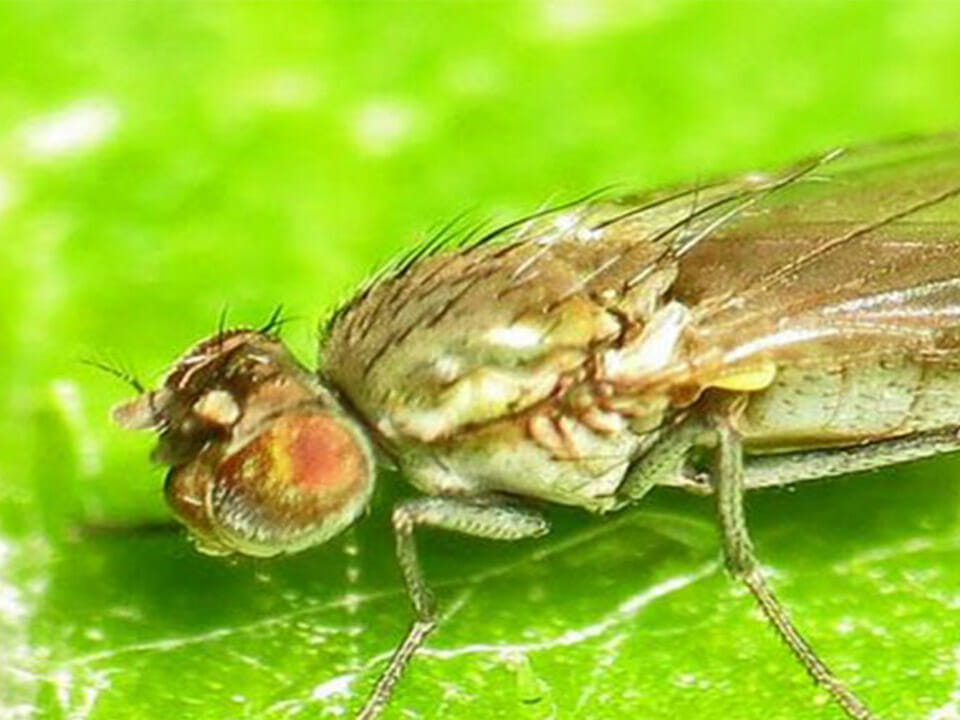
Unlike shore flies, fungus gnats are poor fliers. They prefer to rest on the edges of pots and crawl around on damp soil. Fungus gnats have longer legs and transparent wings and may resemble very tiny mosquitoes, no bigger than ⅛ of an inch long. Because fungus gnats do feed on plant tissue, they’re easier to control with organic insecticides.
Of course, as these insects are flying around your greenhouse, you may be unable to distinguish the two due to their small size. You’ll be able to better identify the type of pest you’re dealing with when they’re at rest, or better yet, when stuck to a sticky trap.
How to tell if you have shore flies in your greenhouse?
Unfortunately, shore flies can be challenging to spot in the early stages of infestation. The larvae are nearly impossible to see in the soil, and if you aren’t observant, you may not see the adults until their population has gotten out of hand.
Much like fungus gnats, you’ll most likely be able to tell if you have shore flies in your greenhouse by seeing the adults flying around from plant to plant. If the infestation is severe, you may also notice what people call “fly specks,” which are essentially fecal spots on the leaves.
Keep an eye out for shore flies in your greenhouse by regularly inspecting your plants. You can use a magnifying glass to tell shore flies and other flying pests apart. Additionally, setting up yellow sticky traps is not only a good method of control, but also helps greenhouse gardeners monitor the presence of shore flies and other flying pests.
Why are shore flies bad for greenhouses?
Given that shore flies don’t feed directly on plants, what’s the harm in having them in your greenhouse? Don’t be fooled, however. Shore flies are not only a nuisance, but they can spread disease and cause aesthetic damage to your greenhouse plants.
Most importantly, shore flies can spread disease. Their flying ability allows them to easily go from plant to plant, spreading diseases along the way. For example, one of the fungal diseases that can be spread by shore flies is Fusarium wilt, an incurable fungal disease that attacks flowering plants, tomatoes, asparagus, peas, cabbage, and many other greenhouse-grown plants.

Additionally, shore flies can impact the aesthetic appearance of your greenhouse plants. While they don’t feed on the leaves, shore flies leave behind unsightly excrement, also known as “fly specks.”
Not only that, but a shore fly infestation will also make your greenhouse unpleasant to work in, particularly if the infestation is severe. They are unsightly, bothersome, and difficult to manage. An infestation of shore flies can impact the enjoyment of greenhouse gardening, and we certainly don’t want that!
Why are greenhouses susceptible to shore flies?
Greenhouses provide an ideal environment for shore flies and their food source: algae. Shore flies are attracted to standing water and algae, which can occur in small puddles, buckets, and in moist soil with excess fertilizer. Lots of organic matter and over-fertilized plants often result in an abundance of algae in the soil and plant debris.
How to get rid of shore flies in your greenhouse organically
If you have shore flies buzzing around your greenhouse, there are some steps that you can take to eliminate them without the use of chemical insecticides. This will ensure that not only are you getting rid of the problem, but you aren’t compromising your plants in the process.
Remove the algae
The best way to get rid of shore flies is to eliminate their food source. Clean the walls, floors, and benches so they are algae-free. If the shore flies have become a big problem, consider reducing the amount of organic matter you mix with your potting soil until the infestation has tapered off.
Sticky traps
Sticky traps are not only helpful for monitoring the presence of shore flies and other flying pests, but they can also significantly reduce their populations. Some gardeners insist shore flies prefer blue traps over yellow traps, but both will work. Place the traps horizontally to catch more shore flies, or vertically for easy monitoring.
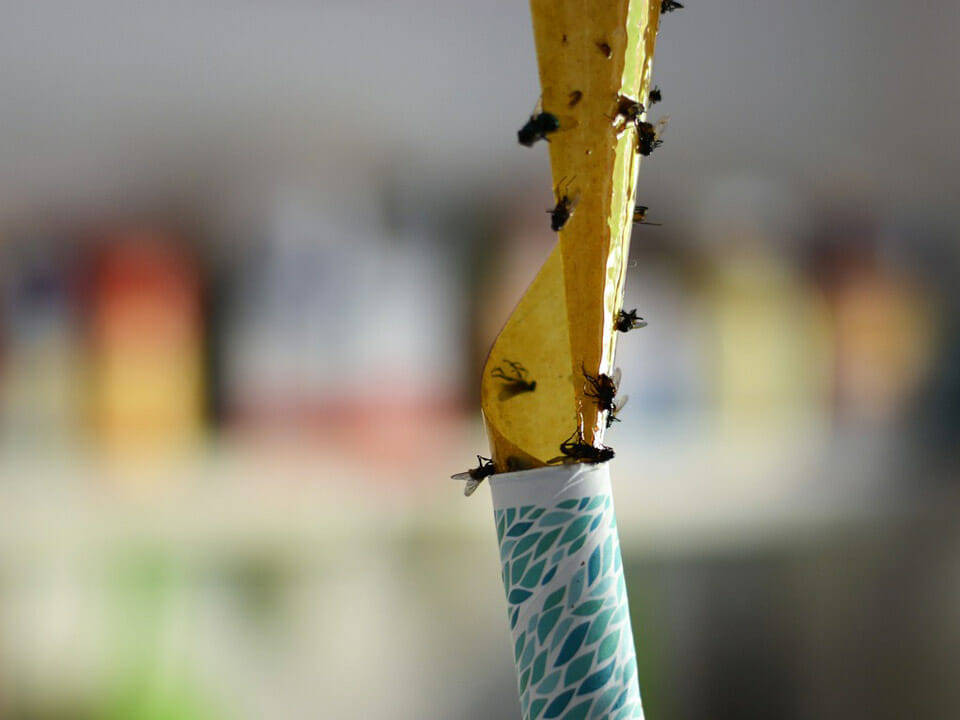
Beneficial insects
While sticky traps are effective for catching adult shore flies, they do little to eliminate the larvae and eggs. Fortunately, there are several beneficial insects that you can release into your greenhouse that will feast on your shore fly larvae, including:
- Predatory mites (great for eliminating larvae in the soil)
- Rove beetles (highly effective at eliminating eggs and larvae from the soil)
- Beneficial nematodes (highly effective against shore fly larvae and eggs)
The above beneficial insects will also go after other pests and larvae in the soil, making them ideal for ongoing greenhouse pest management. You can get beneficial insects at many gardening supply stores or online suppliers who will ship them to you.
How to prevent shore flies in your greenhouse
Whether you’ve just gotten rid of a bad infestation of shore flies or you want to ensure that they never get out of control in the first place, there are a few things that you can do to save yourself from the headache of dealing with shore flies in the future.
Control algae growth
Shore flies thrive in locations with above-average levels of algal growth. Don’t give them a reason to make your greenhouse their new home by controlling the algae growth and reducing excess moisture.
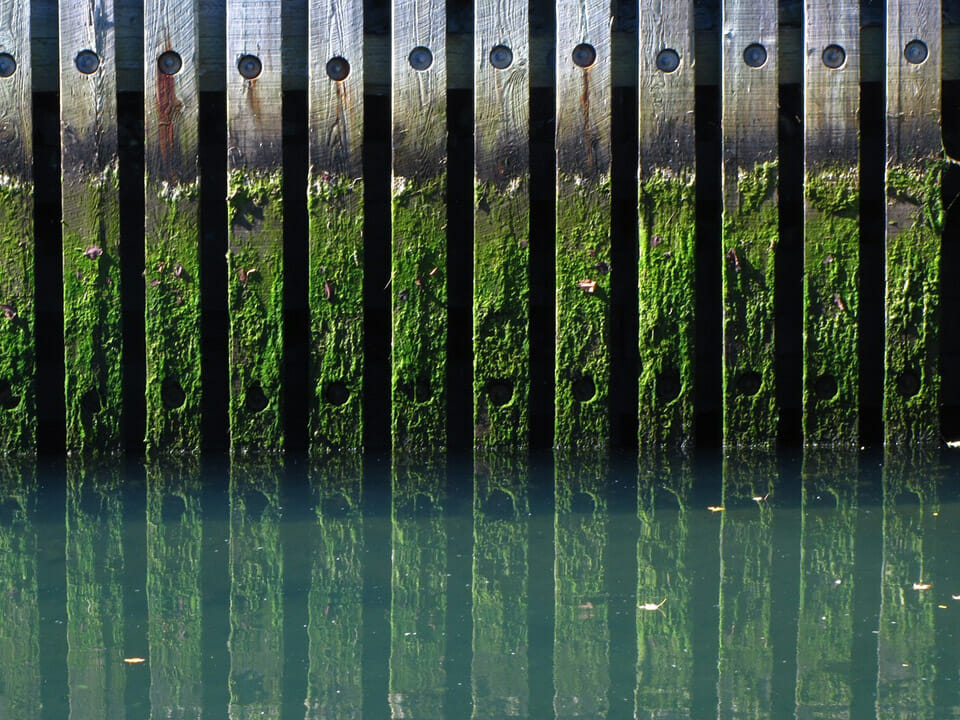
You can prevent over-fertilizing your plants by keeping to a regular schedule or reducing application altogether if algae is present.
Moreover, eliminate excess moisture in the greenhouse by fixing leaky hoses, picking the right irrigation system, and improving greenhouse ventilation.
Practice good sanitation
Shore flies thrive in damp and dirty conditions. Minimizing these conditions is another effective shore fly management practice. Good greenhouse sanitation involves removing plant debris from your greenhouse and scrubbing off algae from the workbenches, walls, and any part of the greenhouse that may harbor them.
Observation
Check on your greenhouse as often as possible, and observe your plants and the area around them for signs of a shore fly infestation. This can be the difference between spotting a small outbreak and controlling them quickly versus having a full-blown infestation to deal with later.

